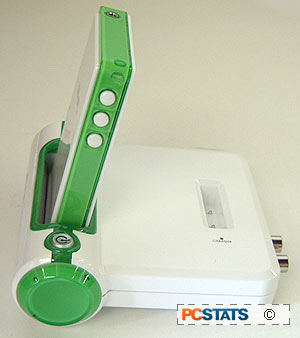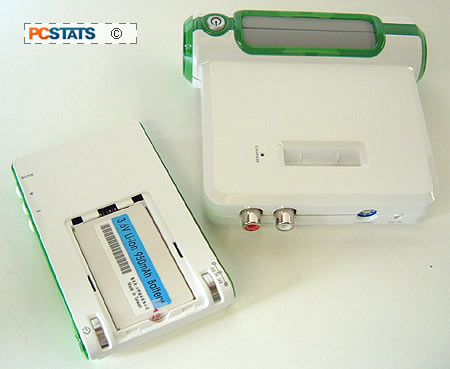 Since the Albatron
Widio advertises "pure CD quality audio without data compression," I made a
point of testing it out with my beloved Grado's, as well as the Audio Technica
headphones it ships with. The results of wireless audio vs. wired audio
listening sessions illuminated a couple key aspects of what is effectively a 2.4
GHz DSSS (Direct Sequence Spread Spectrum) wireless headphone system.
Since the Albatron
Widio advertises "pure CD quality audio without data compression," I made a
point of testing it out with my beloved Grado's, as well as the Audio Technica
headphones it ships with. The results of wireless audio vs. wired audio
listening sessions illuminated a couple key aspects of what is effectively a 2.4
GHz DSSS (Direct Sequence Spread Spectrum) wireless headphone system.
The Widio knocks a dB or two
off the volume of the source, but other than that there is scant else in the way
of distortion or loss of range that I can hear. Officially, the specs list a 90
db S/N ratio, and frequency response of -1.2 dbr at 20Hz; -0.7 dbr at 20 kHz.
Headphone output power ranges from 60mW at 16 ohm, to 35mW at 32 ohm.
What that translates to in
english is excellent reproduction of the source audio at moderate-to-high
volumes, and the introduction of minor amounts of distortion when the Widio
receiver's amplifier is at its max - and I mean ear splitting loud. Of course,
distortion is heavily dependent on the quality of the headphones plugged into
the pack-of -cards-sized Widio receiver...
 Though, on its own, it is reassuring to hear that the Widio is capable of
keeping things clear at elevated volume levels, even if the Audio Technica
ATH-EM7's headphones are pushed way beyond their design envelope.
Though, on its own, it is reassuring to hear that the Widio is capable of
keeping things clear at elevated volume levels, even if the Audio Technica
ATH-EM7's headphones are pushed way beyond their design envelope.
In other words, expect the
ATH-EM7's to crap out from excessive bass or excessive volume long before the
Widio begins to distort the source audio coming through its Syncomm Synic IA6
chip.
One little tip to keep your
tunes coming out of the Widio receiver as clean as possible is to check that
when it is hooked up to a PC, the output volume is not too loud.Since there is
volume control built into the Widio receiver, we found the best volume ranges
were accomplished by keeping the source audio levels on the low side.
Audio output on stereo
equipment doesn't vary much, so this little tip doesn't apply as it does when
connecting the Widio to a PC sound card, or PC headphone jack.
Wireless Interference and Signal
Strength?
Since the Albatron Widio
essentially just transfers a 2.4 GHz signal from its transmitter to receiver,
there isn't much in the way of set up. The transceiver needs only to have its
left/right RCA audio input connected to the audio output of a device with either
of the two cables included in the box. One cable allows you to connect the Widio
to standard RCA left/right audio outputs. The other cable is set up for the more
common mini-headphone audio output jack typically found on PC
soundcards.

A 5V AC-adaptor powersource
provides the transmitter with power, and if there are multiple Widio units in
the same area, a channel selector allows each unit to function on its own
carrier frequency of 2412MHz to 2472MHz.
There are 7 channels available,
but Albatron recommend interspacing adjacent units (ie. channel 0, 2, 4, 6)
rather than selecting sequential carrier frequencies. As the manual illustrates
a situation with four units, it is difficult to say whether or not one could
reliably use 7 Widio's in the same area without interference... but four
certainly seems doable.
